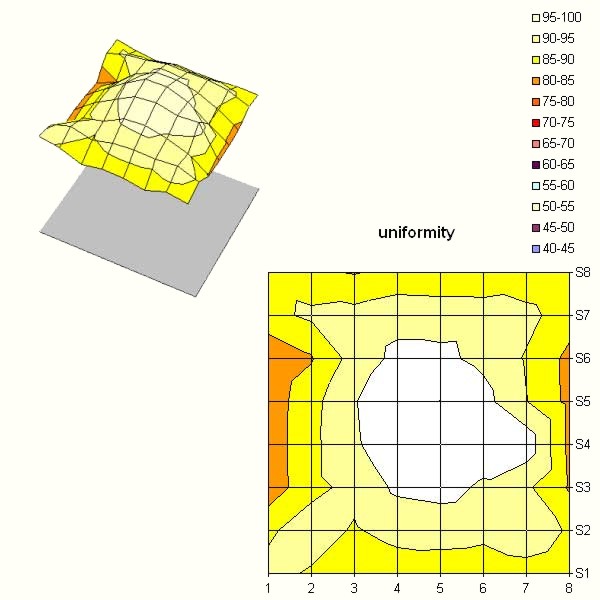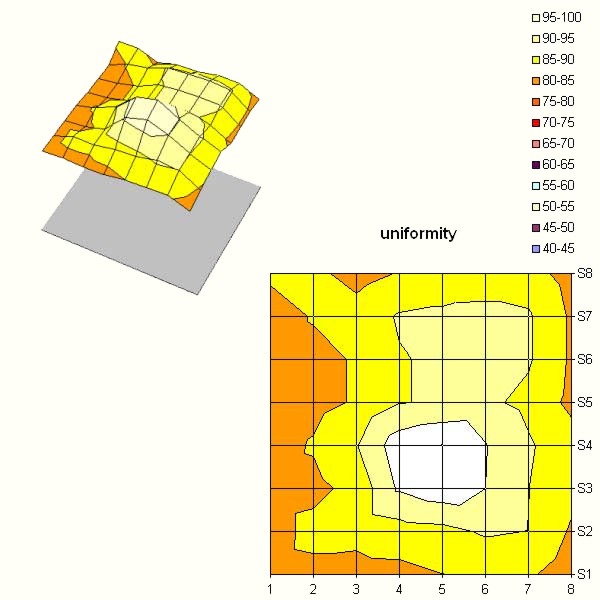ViewSonic Overdrive LCDs: A New Era of Very Fast Panels?
Spatial Uniformity
We measured the uniformity of the panel's lighting.
For those of you who aren't familiar with THG's test methodology, we set the panel at 50% brightness and 50% contrast and measure the uniformity of the lighting on a white image separated into 64 areas of equal size. The brightest point is considered to be 100% and the previously measured black value is considered 0%, with the other values obtained distributed between them.
VP192s
VP191b
Here again, we didn't note any great difference between the two monitors. In both cases, the results were average and the values were all grouped within 15% of the total range. That's more than acceptable, but MVA/Overdrive hasn't made much of a difference here.
Up to now, the advantage has gone to the MVA/Overdrive technology. The VP191b performed better than its brother. And even when compared to the L90D+ or the Q19, the VP191b came out quite well, with better performance.
Get Tom's Hardware's best news and in-depth reviews, straight to your inbox.
Current page: Spatial Uniformity
Prev Page Color Rendering: The Generation Gap, Continued Next Page Latency
